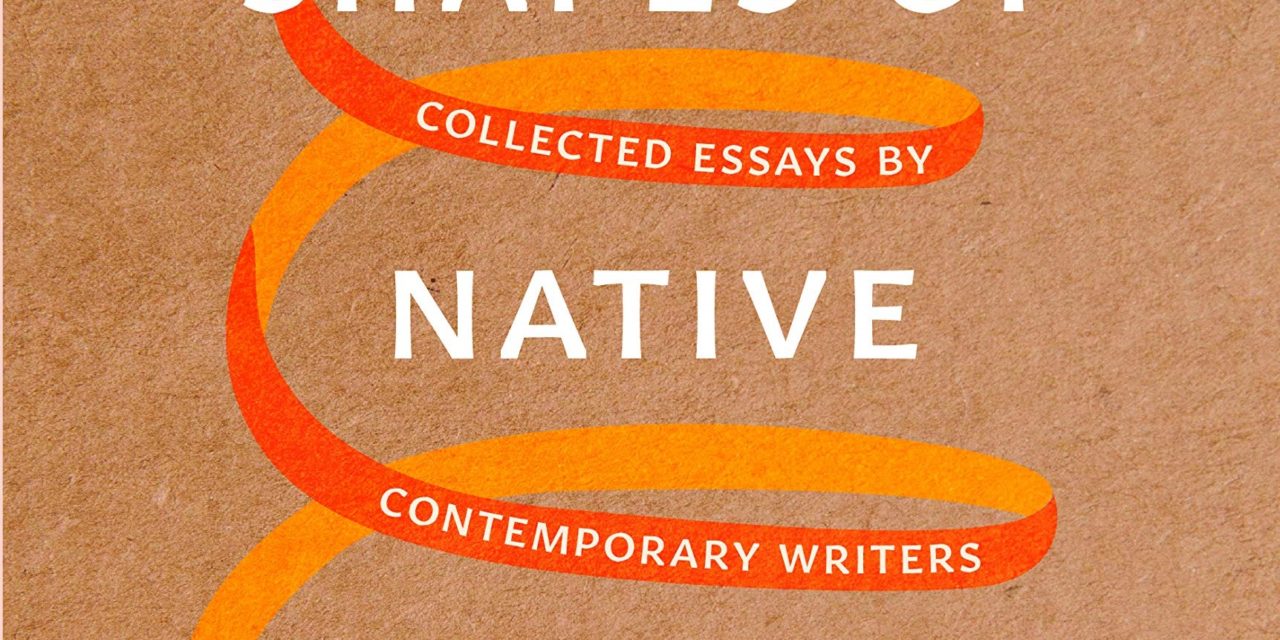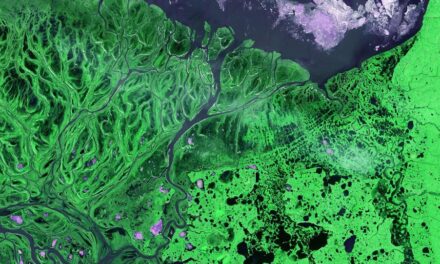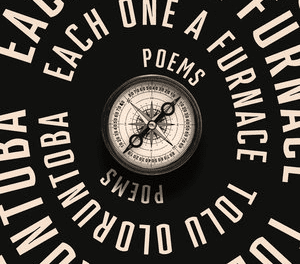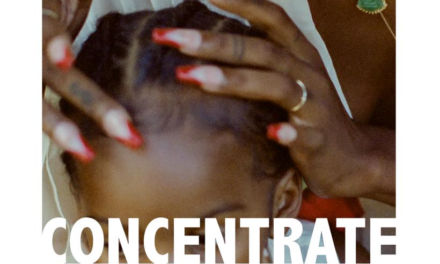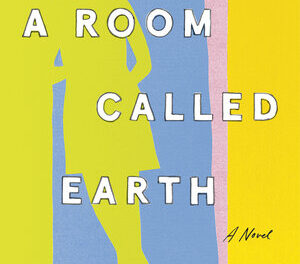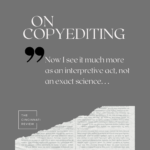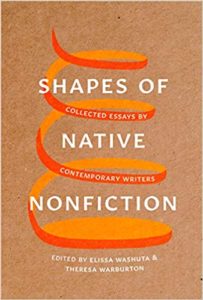
Editorial Assistant Emma Faesi Hudelson: Shapes of Native Nonfiction, an anthology of essays by Native authors (University of Washington Press, forthcoming in June 2019), is a formidable entry into the swelling ranks of literary nonfiction. And it’s one that the nonfiction community—mostly white, me included—needs to pay attention to. As editors Elissa Washuta and Theresa Warburton point out, Native authors are grossly underrepresented in American anthologies, and especially in literary nonfiction. John D’Agata’s The Next American Essay (Graywolf, 2003), an anthology built around the hottest, newest incarnation of the essay, the lyric essay, contains only five authors of color, and only one Native author (yes, it’s Sherman Alexie) out of its thirty-two contributors.
Washuta and Warburton attribute this to the “misguided notion” that “Native authors writing nonfiction must always be explaining their lives as Native peoples.” Problems arise when the cultural expectations of a Native writer revolve around that writer enlightening the very culture that oppresses her. Explaining Otherness is a tight space that doesn’t allow for experimentation and exploration. Shapes of Native Nonfiction opens that space wide and creates a container for first-person narratives that subvert and eschew traditions to “challenge conventional knowledge about form, structure, and the production of history.”
To create this container, Washuta and Warburton have chosen a vessel of symbolic weight: the basket. While they resist using the basket as an overarching metaphor for this collection, they use components of basket weaving to organize the different sections. The “Technique” section contains craft essays. “Coiling” is for seamless narratives. The essays in the “Plaiting” section are fragmented. In “Twining,” they are multisourced. The focus on form is no accident. Washuta and Warburton want to celebrate form as a method of expression, one that is particularly useful to Native writers.
The essays in this anthology are wildly innovative, each one using a different organizing principle and a different form. Kim Tallbear’s “Critical Poly 100s” is a set of 100-word essays. Billy-Ray Belcourt’s “AND SO I ANAL DOUCHE WHILE KESHA’S ‘PRAYING’ PLAYS FROM MY IPHONE ON REPEAT” is written in all capital letters and uses slashes instead of standard punctuation. It made me question my advice to students to never, ever use all caps. Byron Aspaas’s “Goodbye Once Upon a Time” moves swiftly from memoir to video description to roadside sign to inquiries of language. Joan Naviyuk Kane’s “I Am Chopping Ivory or Bone” is fragmented, moving in associative rather than linear gestures from beginning to end. In each of the twenty-seven essays in this anthology, form is vital to a reader’s understanding of the content.
These essays are not written transcriptions of orally delivered narratives, which, as Washuta and Warburton point out, have come to be the expected norm for literary nonfiction by Native authors. Instead, the on-the-page shape of the essays in Shapes of Native Nonfiction carries the weight. The title is apt. In this anthology, shape matters. It turns the essay into a resistant form, pushing against the myth of the “disappearing Native” and asserting a new narrative, one that isn’t subject to colonizing. Or, as Washuta and Warburton write, “For Native writers . . . nonfiction allows for a revision of the dominant cultural narratives that romanticize Native lives and immobilize Native emotional responses: the essay is the work of thinking and feeling.” Shapes of Native Nonfiction is full of cognitive and emotional work. It turns the essay into something alive and breathing.
Emma Faesi Hudelson is a PhD student in literary nonfiction at the University of Cincinnati. Her work has appeared in BUST, Foglifter, The Rumpus, and other publications. She lives in Indianapolis, Indiana, with two cats, two dogs, and one husband.

